Fashion’s love affair with nature: It’s complicated
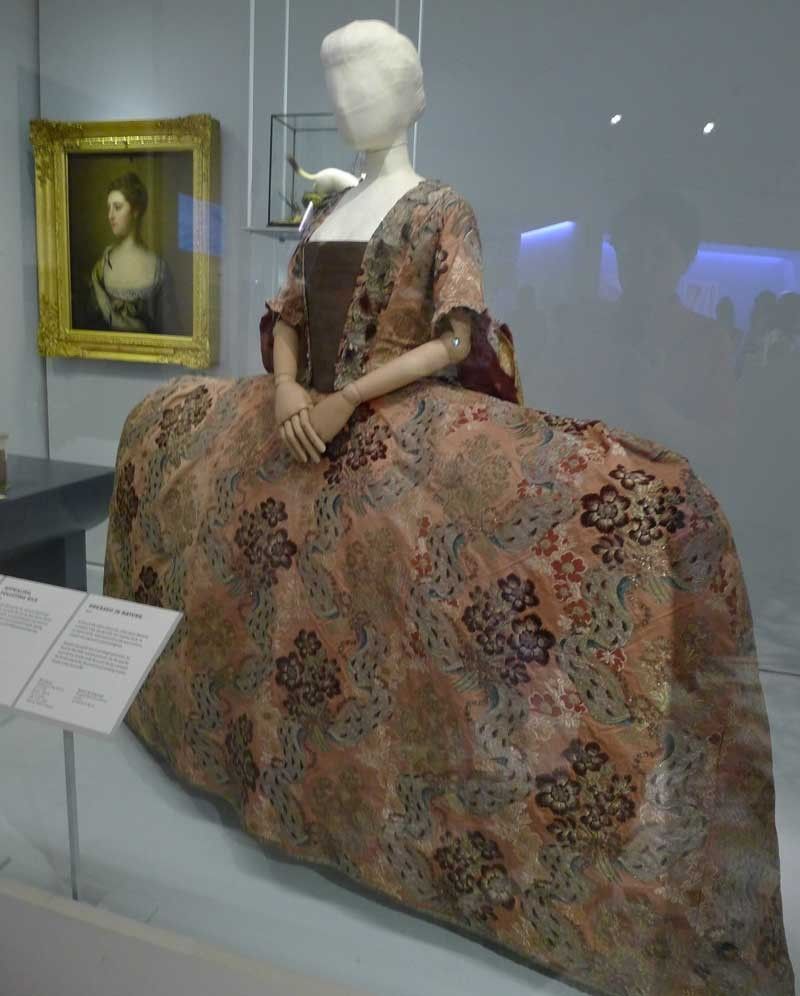
There is no greater love than that which fashion has for nature. And yet like all love affairs, this one has its many complications which the Victoria & Albert explores in its ongoing exhibit that features over 300 astonishing pieces dating from 1600 to the present, from historic mantuas to the couture dresses and accessories of fashion luminaries like Christian Dior, Alexander McQueen and Philip Treacy.
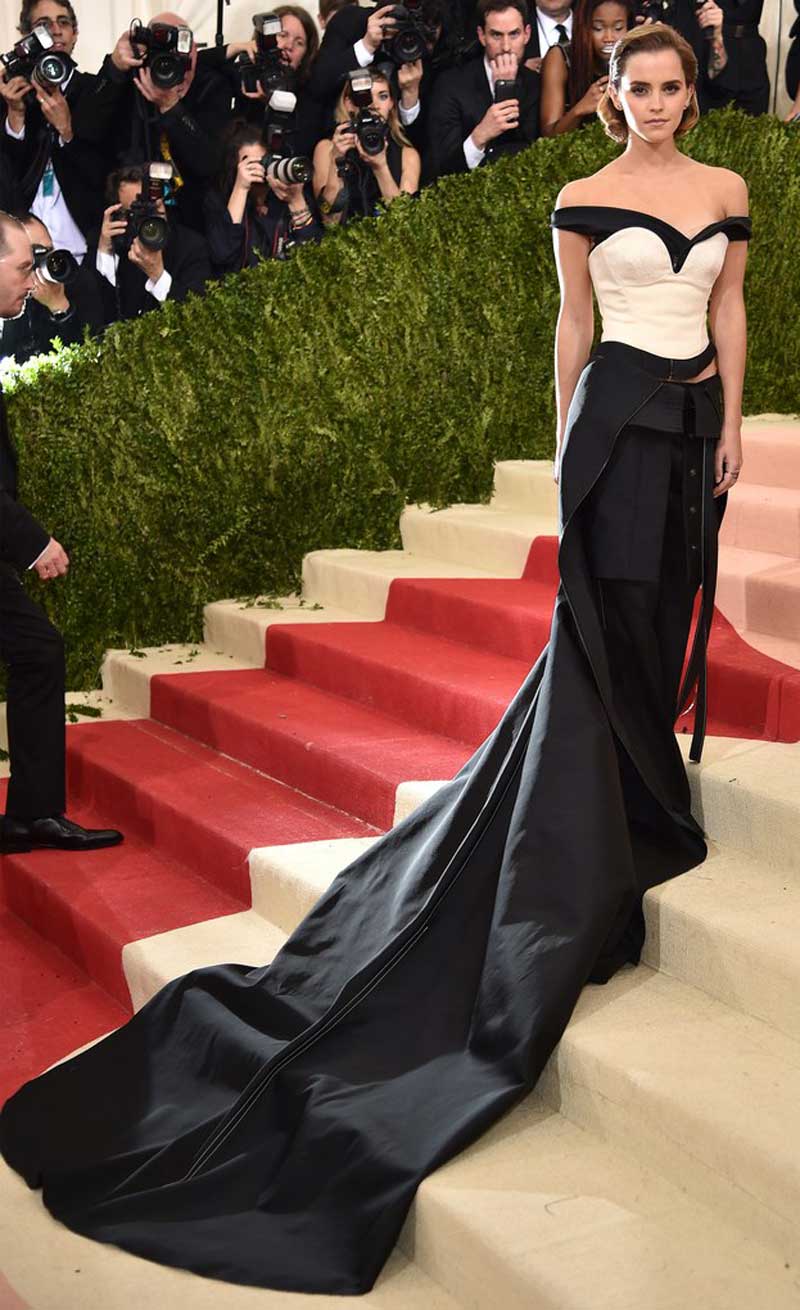
Emma Watson wearing a Calvin Klein dress made from fabric created out of recycled plastic bottles, as part of the “Green Carpet Challenge” at the Met Museum Gala in 2016 (Photo courtesy of V&A)
The natural world was always a source of fascination and this was expressed most exquisitely in embroidery, which revealed a keen domestic interest in flora and fauna. Colorful dyed silks imported from the Middle East were used to embroider garments like a 1610 lady’s waistcoat with strawberries, pansies and pea pods and household items like a 1620s bed curtain and valence decorated with flowering plants, trees, fruits and insects.

An 1868 dress decorated with over 5,000 beetle wings
Although designs can come from observation, there were a lot of illustrations to copy in the numerous books, which offered a closer look, reflecting a more systematic attempt to classify and order nature. Colonial expansion and travel introduced explorers to new species that they eagerly and dutifully documented. By the mid-18th century, books on natural history sold better than others in Britain, providing inspiration for textile designs and embroidery. This allure continues today, from Giles Deacon’s haute couture dress with a pattern of delicate bird’s eggs to the ubiquitous beetles and snakes that adorn Alessandro Michele’s dresses, shoes, bags and jewelry at Gucci.
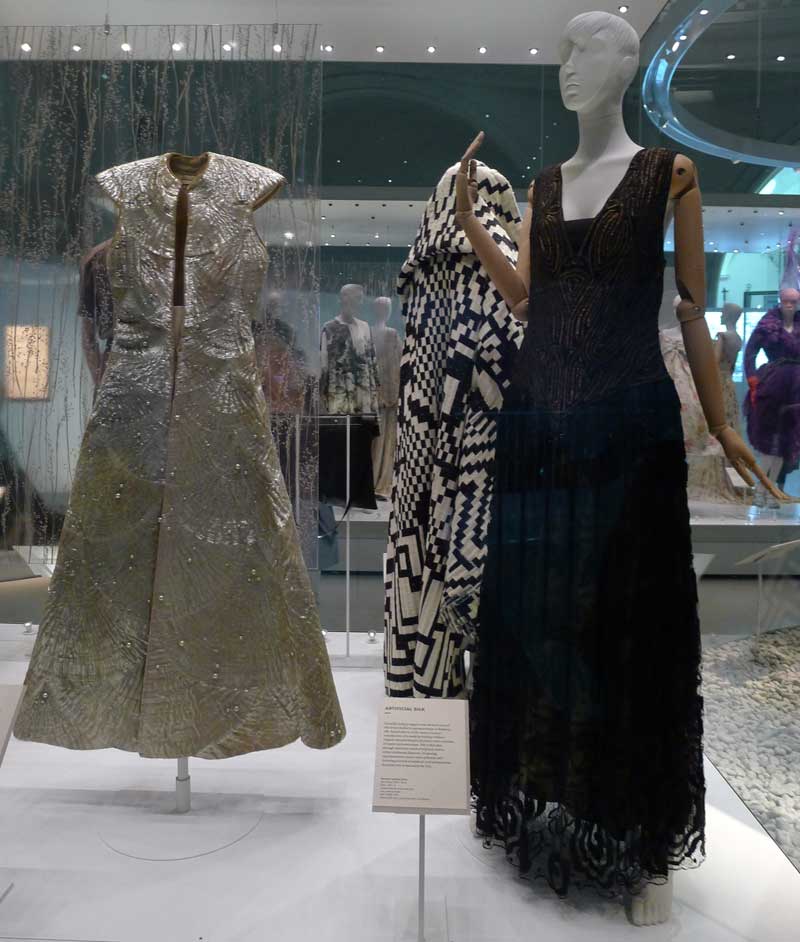
Cellulose acetate evening coat with oyster shell patterns by Alix (Madame Grès, 1936). “Samovar” evening dress by Paul Poiret (1921) using artificial silk or cuppramonium which is banned in the USA because its production causes water pollution and irritating aerosols of noxious chemicals
Aside from the software, nature also provides the hardware in the production of fashion. Raw materials used in the 17th and 18th centuries include the preferred fibers of silk, flax, wool and cotton and the now controversial whalebone, turtle shell and ivory.
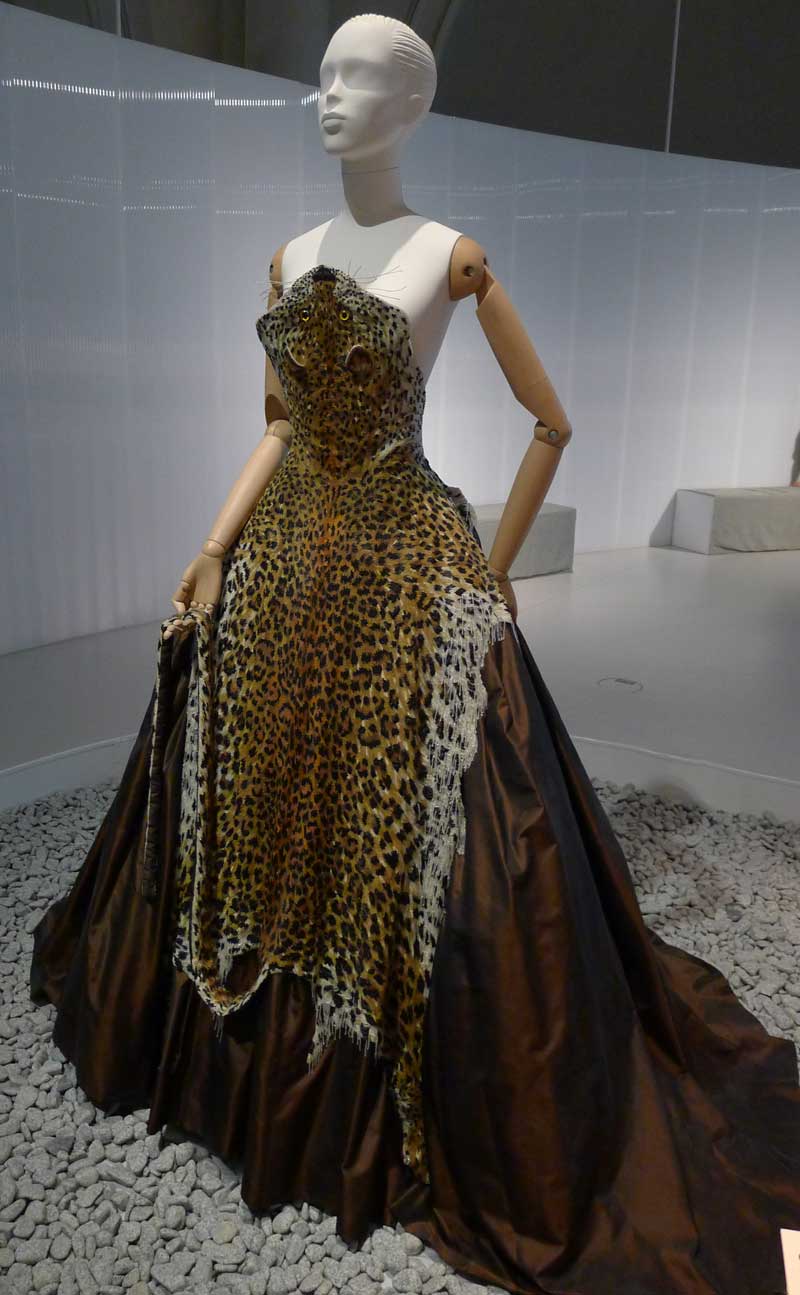
“Leopard Skin” from Jean Paul Gaultier’s 1997 gown crafted with beadwork that took 1,000 hours to create
Whalebone — the colloquial name for baleen, which is cut from the upper jaw of the baleen whale — was used to stiffen and shape garments and to make accessories. Whales were also hunted for their valuable oil and blubber, which were used for lighting, soap, preparing leather and lubricating machinery. The demand led to overhunting, resulting in the dramatic reduction of the whale populations in the seas nearest to northern Europe, aside from the fact that whales were subjected to a cruel and protracted death. Beavers were prized for making hats of felted fur but by the early 1600s their scarcity led the British and the French to compete for supplies in Canada. Hawksbill turtles, whose protective shell is used for fans, hair ornaments and other accessories, are also endangered because of poaching and over-exploitation. The same goes for the elephant population, which is dwindling because of the demand for its ivory tusks that are used for jewelry and other accessories.

A 1980s knitted tube dress by Rosemary Moore is one-size-fits-all, removing the need to manufacture a full range of sizes, leaving fewer unsold items and reducing waste.
Inasmuch as these materials have resulted in beautiful creations for man, they have also wreaked havoc on the environment, upsetting the balance of the ecosystem and endangering the existence of flora and fauna that man relies on. Even fabrics are not as harmless as they seem — the dyeing and production of textiles cause pollution that taints the water we drink and the air we breathe.
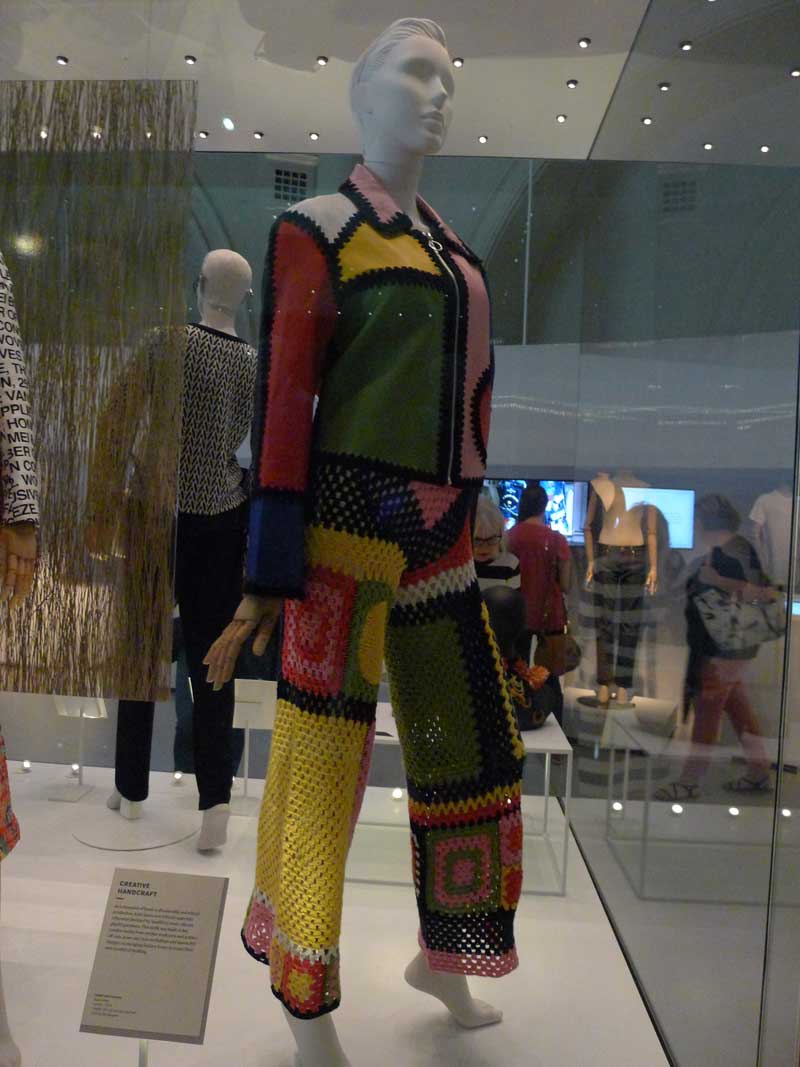
Katie Jones’ ensemble made of leather cut-offs and surplus yarn, materials otherwise destined for the landfill
Early on, man’s abuse of nature for fashion was not as destructive because garments were given more value as seen in a British gown from 1780, which had alterations to give it a more fashionable appearance. Garments from this period often show evidence of updating and repair and were not as easily disposed of as they are with fast fashion today. Even raw materials were sourced and processed in Europe. However, international trade spread in the 1800s and consumer demand rose as a result of the advent of mechanized production, the rise of department stores and advertising and the influence of media’s coverage of fashion. The carbon footprint naturally increased to alarming proportions.
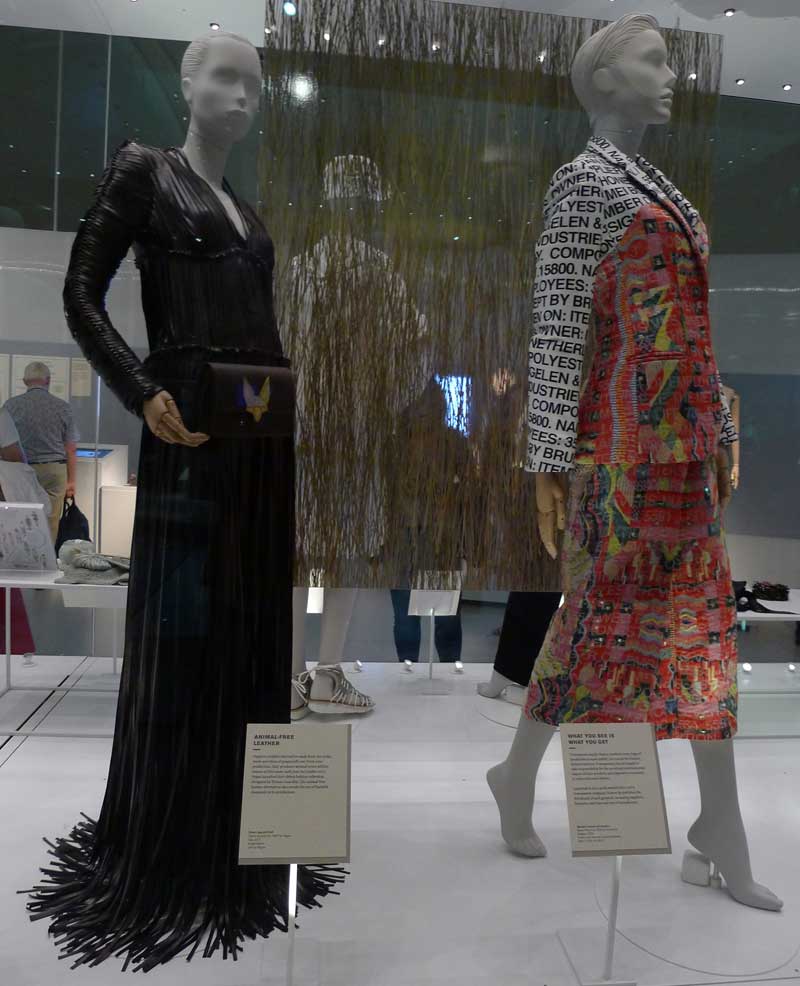
Tiziano Guardini’s dress made of Vegea, a leather alternative made from grape stalks, seeds and skins left over from wine production; and a trouser suit by Bruno Pieters for Honest, a fully transparent company that publishes full details of the ethical manufacturing of each garment including sources of materials and suppliers.
The situation was exacerbated in the 20th century when ready-to-wear clothes became the norm and high-street chain stores multiplied. From the 1970s manufacturing shifted overseas to countries with low labor costs but little environmental legislation. The fashion industry’s dependence on coal, oil and chemicals for power and as raw materials for producing fibers and dyes damaged the environment further, with pollution and over-hunting endangering plants, animals and human life.
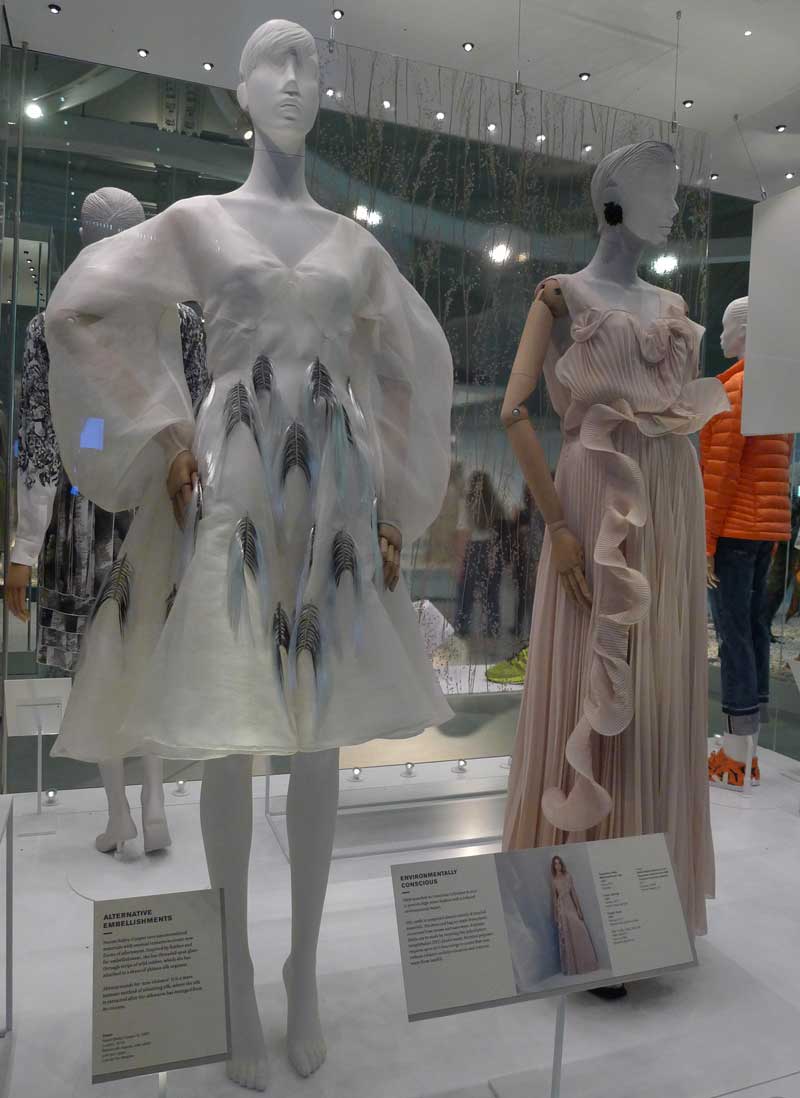
Environmentally conscious garments: Naomi Balley-Cooper’s dress of Ahimsa organza, a more humanely produced fabric where the silk is extracted after the silkworm has emerged from its cocoon; and an H&M “Conscious Dress” made from plastic recovered from oceans and waterways.
By the 1980s, some enlightened designers began to use fashion to raise awareness of the damage caused by the industry and started the initiation of green, eco-friendly practices. High profile figures have popularized these issues which are tackled in the exhibit: Vivienne Westwood’s clothes worn in protest against climate change are shown alongside Kataharine Hamnett’s 1989 “Clean Up or Die” collection and posters from Fashion Revolution, a collective calling for change in the way clothes are sourced, produced and consumed. A vintage outfit customized by London designer Katie Jones highlights the call for upcycling during Fashion Revolution Week in 2015. There are also innovative fabrics like Vegea’s leather substitute made from grape waste from the wine industry, a Ferragamo ensemble made from orange fiber derived from citrus waste and an H&M Conscious Dress made from recycled shoreline plastic.
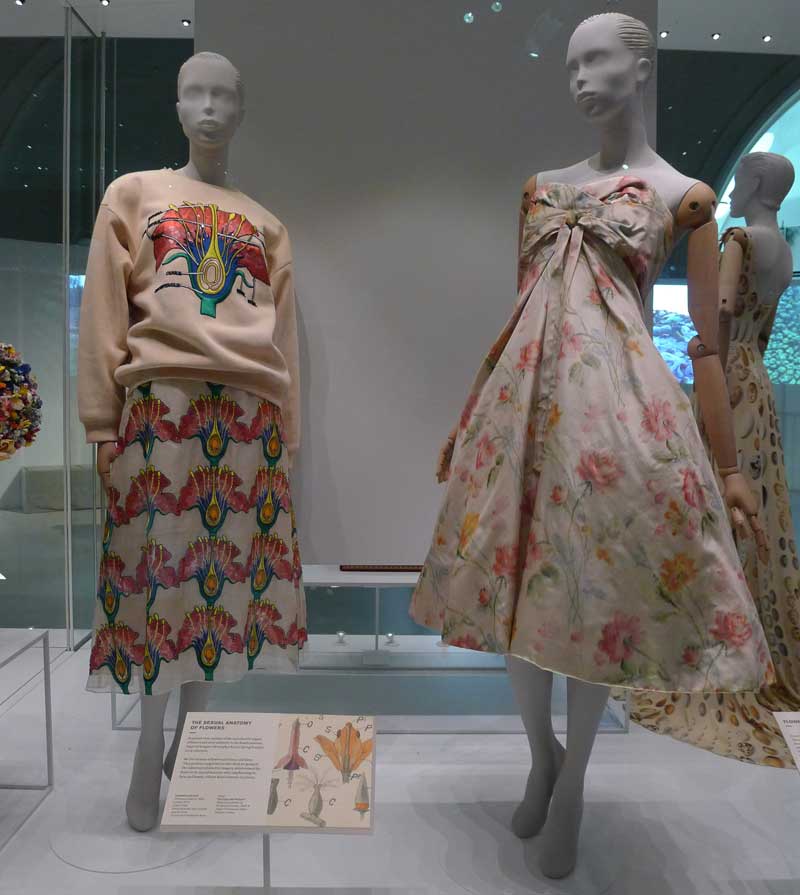
Flower Women: Christopher Kane’s 2014 sweatshirt and skirt and Christian Dior’s 1958 evening dress in silk taffeta embroidered with roses
A range of solutions are offered in displays that demonstrate how fashion’s impact on the environment can be reduced, from low water denim and using wild rubber to more conceptual and collaborative initiatives like a dress grown from plant roots by artist Diana Scherer who uses seed, soil and water to train root systems into textile-like material; a bio-luminescent, genetically-engineered silk dress created by Sputniko, the MIT Lab and the National Institute of Agricultural Science (NIAS) South Korea; and a tunic made from synthetic spider silk from Bolt Threads x Stella McCartney.
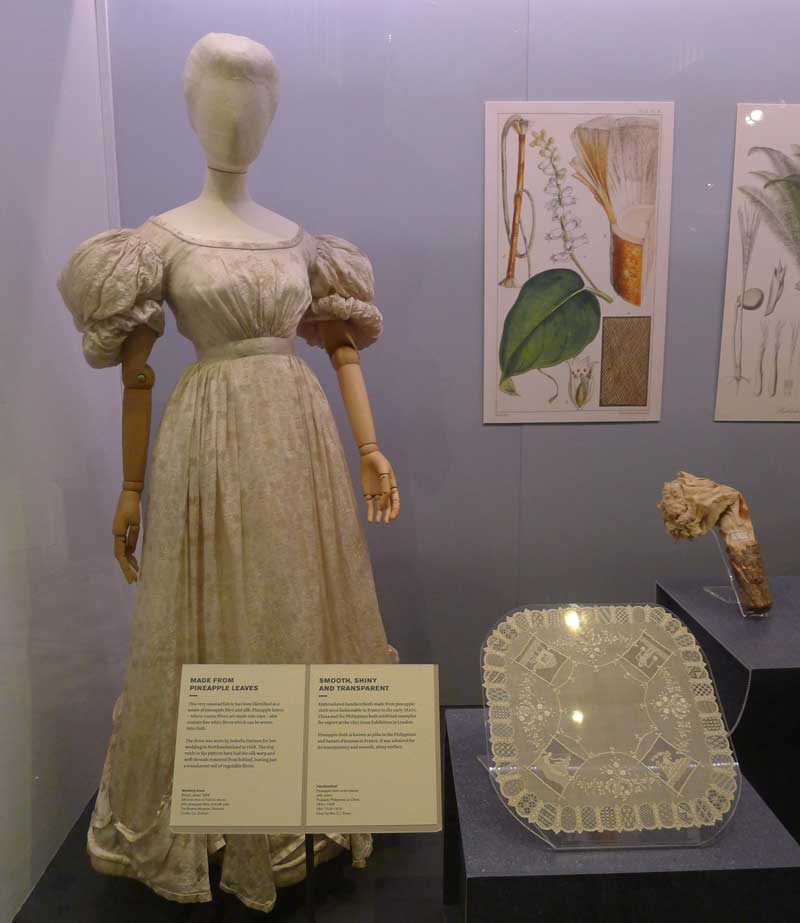
An 1828 wedding dress made of pineapple fibers and silk and a Filipino embroidered piña handkerchief, which was fashionable in France in the 1840s
Fashion’s love affair with nature is as strong as ever, but this time it’s a deeper love with concern for its survival in the long term. Through television and digital technology, we are faced with the mystery and complexity of the earth and realize how much human activity is damaging our planet. We can no longer create and consume as irresponsibly as we have in the past.
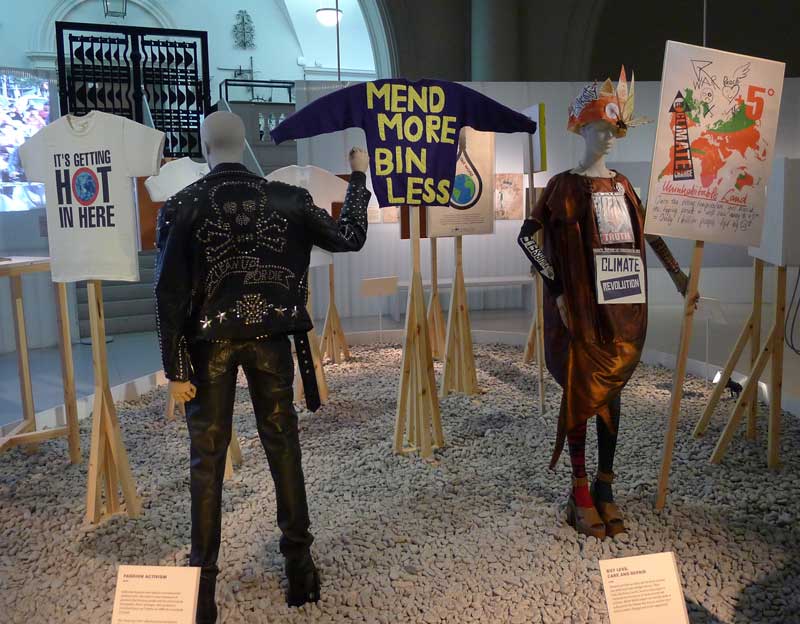
Fashion activism: Katharine Hamnett’s studded leather ensemble from her “Clean Up or Die” collection (1989) and Vivienne Westwood’s “Climate Revolution” dress and placards from the fashion show (2012)
* * *
“Fashioned From Nature” is ongoing at the Victoria & Albert Museum in London until Jan. 27, 2019. For information, visit www.vam.ac.uk. Follow the authors on Facebook via Ricky Toledo Chito Vijandre; Instagram @rickytchitov and Twitter @RickyToledo23.



















